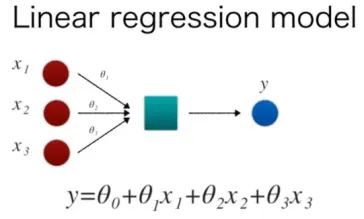To be an entrepreneur is like stepping onto a roller-coaster ride in the world of business. There are ups, there are downs and there are horrifying turns. Sometimes you feel a little frustrated afterwards and sometimes you are inexplicably happy. No matter how many times you ride the coaster or how many people have rode it before you, each go-around feels different. The unpredictability, the uncertainty and the risk are what drive the entrepreneurs to the startup life.
Fortunately, they can find some comfort in start-up analytics. They are logical, they’re rational and they make sense of this challenging lifestyle.But why do so many entrepreneurs find startup analytics intimidating? There are a number of open questions, a lot of blanks and a lot of gray areas. Throw in terms like “growth hacking” and “lean startups” and it’s enough to confuse any beginner. This article is to demystify this world of analytics! It’s not as daunting as it seems.
Metrics Do Matter
First of all the metrics help startups set their goals. And the goals are just dreams with deadlines. Without metrics, it would be impossible to set goals and measure the progress towards them. The goals allow us to be constantly improving and constantly pushing forward.Metrics also help entrepreneurs make smart, informed decisions about the startup. One can identify trends and patterns, problem areas and successes, and potential next steps. Before making major decisions e.g. product iterations and raising capital, startups can consult their metrics. Is it the right time? Will investors take it seriously? Of course, there are a number of other reasons why metrics matter. Progress is the number one factor that motivates us at work. Sharing updates with your team keeps them motivated, informed and focused. Startup launches are losing their PR power, and more and more tech journalists are gravitating towards stories based on growth/success metrics.Without metrics, we don’t know how far we have or have not progressed. We don’t know when our startups are in trouble until it’s too late. We don’t know how to make decisions based on anything other than “entrepreneur intuition”, which definitely doesn’t have a high success rate.Let’s start with a basic fact. Startups are typically at different stages. One startup might be 15 people strong, scaling to 1 million paid users. Another startup might be two co-founders looking for their first 100 free users.The most important metrics depend on the stage of the product. Prior to product/market fit, one should focus on engagement metrics and qualitative feedback from users. This might mean churn, depending on the product category. The better the engagement, the better you set yourself up for growth later on. After the product is working and growing slowly, then the focus would be primarily on growth metrics like signup percents and invite rates.In the beginning, one should focus on engagement metrics and the feedback from users. The reason is that we are still seeking validation and perfecting the product. In the later stages, focus should be on growth metrics. Still, many new entrepreneurs skip right to those growth metrics and many experienced entrepreneurs are stuck on their engagement metrics.What growth metrics should the team be focusing on? Once again, the answer is relative. It really does depend on what your goals are and what you are trying to accomplish in 1, 3, 6, 12 months.Every startup is different, every entrepreneur is different. We all have different goals and different plans for achieving those goals.
Importance of Analytical Context
Entrepreneurs are famous for their willingness to take risks and trust their guts. So, when does context come into play with startup analytics? The simple answer is often.I see people make decisions that are backed by the metrics, but violate common sense. If your ad is working but it is boring, you have a problem. Because as soon as you stop running the ad, the clicks will stop.Sometimes the numbers pull you in one direction when your gut or common sense is pulling you in the opposite direction. Who should you let win? You have to think about analytics in context. People talk about how a landing page may be ugly but acceptable as it converts. Then you need to find how to make it better without ruining the conversion rate–because your image matters too. Startups are bound to operate in the intangible sometimes. The branding and public image is just one example. Measure the tangibles and act on the analytics, but have the intangibles in the back of your mind at all times. Just because you can’t see them on a dashboard doesn’t mean they don’t exist. Sometimes you just have to trust your gut and ignore the numbers in favor of common sense.Always look at your numbers in context.
Startup Analytics Mistakes
1. Dealing in the Success Theater
When one deals with rosy metrics, one actually plays in success theater. You see every aspect of the startup through rose-colored glasses. Startup analytics just don’t work like that. Entrepreneurs can only afford to deal in metrics that help them make decisions about their startups, metrics that lead all the way down to the bottom-line. The problem with rose-colored metrics is that they are the easiest to spot and the easiest to measure.
2. Focusing only on the Long-term or Short-term goals.
One of the most common questions entrepreneurs have about startup analytics is whether they should focus on the long-term or the short-term. The answer is both.. Let’s say your goal is to increase product signups 30% month over month for three consecutive months. Do you sit in your analytics dashboard for twelve hours every day? The answer is in balancing the short-term with the long-term.
3. Getting Data but Ignoring Action
Collecting data is a great idea for startups at any stage. Hoarding data or neglecting action is not. There is a very big difference between collecting data for the sake of saying you’re collecting data and collecting data to help you make informed decisions and take action. Since the popularity of big data, it seems that some startups believe the more data the better. That’s just not true and it’s not practical for entrepreneurs.
Startup Analytics Best Practices
- Adopt a lean approach for the Startup Analytics
- Move from a broader view to narrow views
- Emphasis on high numbers
- Utilize testing strategy seriously
When you are at the top of the roller-coaster and waiting for the drop, you want to be sure the coaster is well-built, well-oiled, and well-maintained. That’s where startup analytics come into play. In an up and down world, they help you make informed predictions. Start-up analytics help you ensure you are moving forward. More importantly, they help you avoid the types of drops that startups just don’t recover from.



